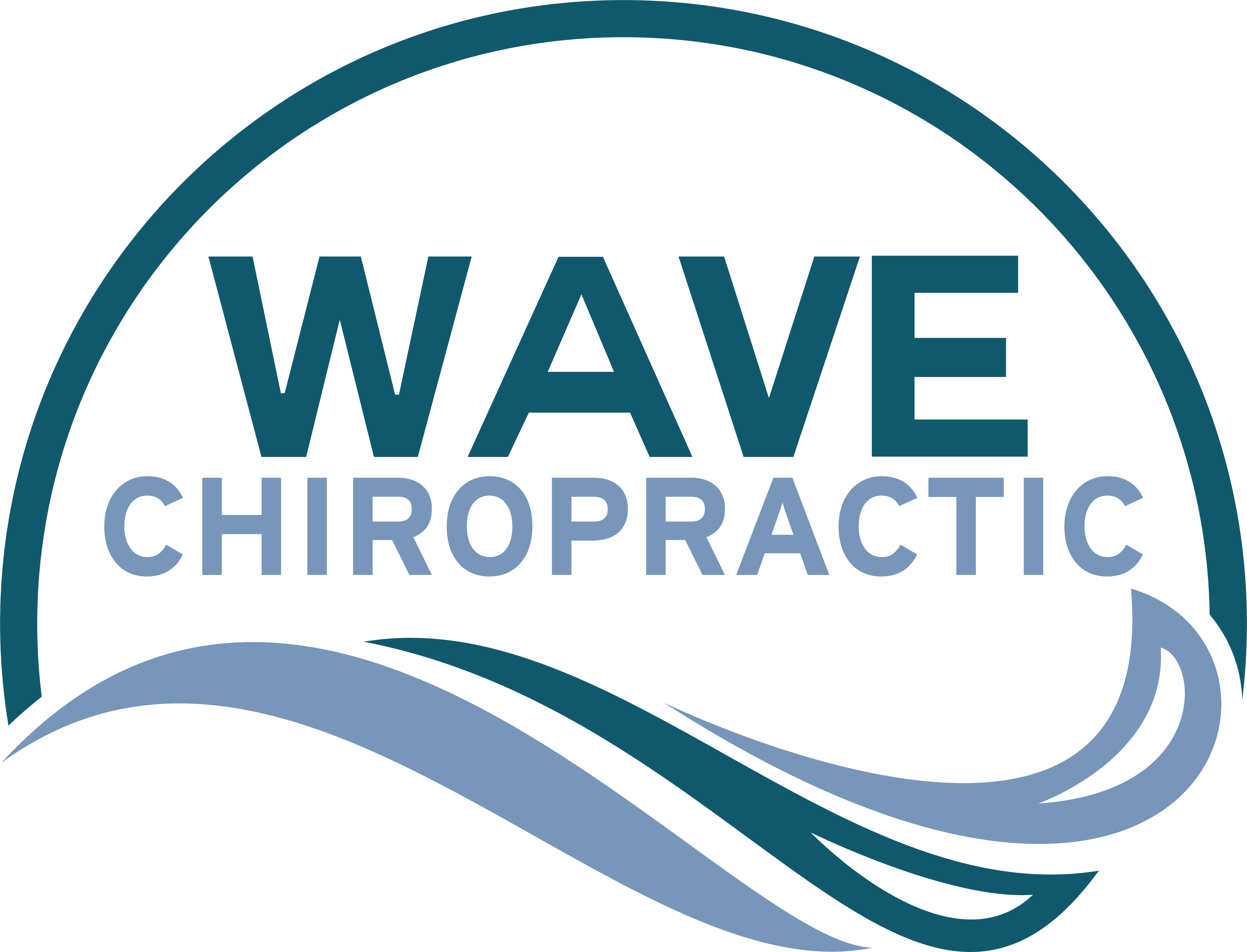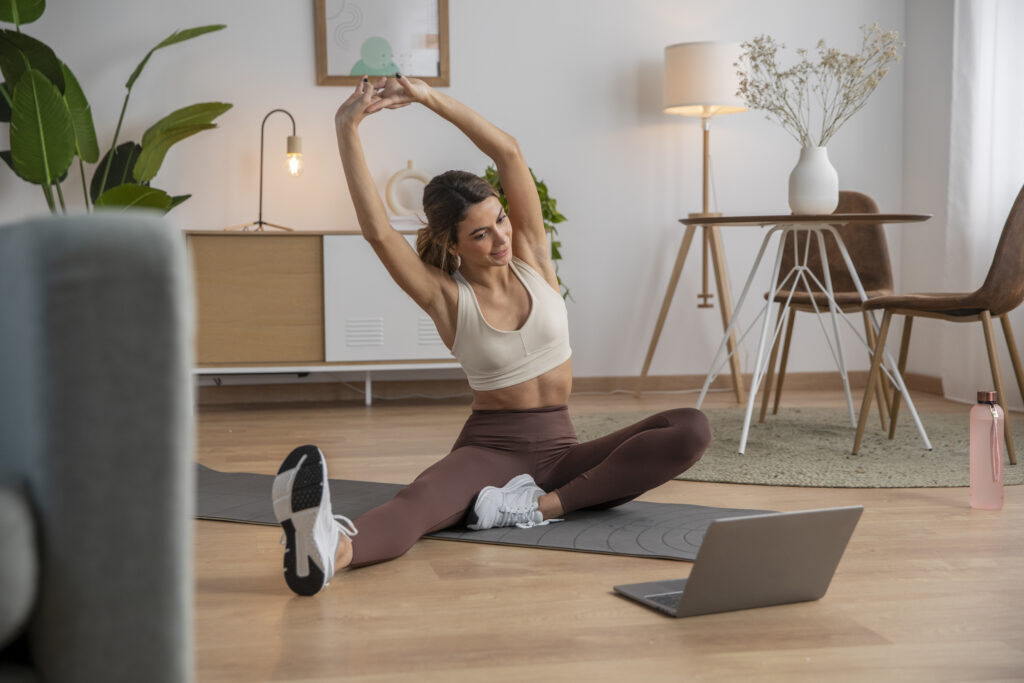You might not realize it, but your posture plays an essential role in your overall health. By taking just a few steps to correct it, you can greatly improve your well-being. Start by evaluating your current posture and identifying any imbalances, then focus on strengthening your core muscles. Adjusting your workspace and incorporating regular stretching can also make a difference. Finally, practicing mindful posture awareness can keep you on track throughout the day. Curious about how each of these steps can transform your daily routine? Let's explore them further.
Assess Your Current Posture
To truly understand how your posture affects your health, you need to take a close look at your current stance and alignment. Stand in front of a mirror and observe yourself from head to toe. Are your shoulders level, or is one higher than the other? Notice how your head sits over your spine; is it jutting forward or leaning back? These details are essential, as they can reveal underlying issues that might be affecting your well-being.
Next, assess how you stand. Your feet should be hip-width apart, with your weight evenly distributed. If you find that you lean to one side or have a tendency to lock your knees, it may indicate muscular imbalances. Pay attention to your hips as well; they should be level, with no noticeable tilting.
Now, consider your sitting posture. When you're at your desk, are you slumping, or is your back straight? The position of your computer screen can also influence your posture; it should be at eye level to minimize strain on your neck.
Finally, don't forget about movement. How do you carry yourself when walking? Are you taking short, shuffling steps, or do you stride confidently? Each of these factors plays a role in your overall posture and health.
Strengthen Core Muscles
Consistently strengthening your core muscles is essential for improving posture and overall health. Your core isn't just about abs; it includes the muscles around your pelvis, lower back, and even the diaphragm. A strong core supports your spine, stabilizes your body, and allows you to maintain proper alignment while sitting, standing, or moving.
To effectively strengthen your core, incorporate a variety of exercises into your routine. Planks are a fantastic choice; they engage multiple muscle groups and improve endurance. Start with a basic plank position, holding for 30 seconds, and gradually increase the duration as you build strength. Side planks can also target your obliques for balanced development.
Another excellent exercise is the dead bug. Lie on your back, arms extended toward the ceiling, and legs raised with your knees bent at 90 degrees. Slowly lower one arm and the opposite leg, alternating sides while keeping your lower back pressed against the floor. This exercise promotes coordination and stability.
Don't forget about incorporating functional movements like squats and lunges. These not only strengthen your core but also improve your overall strength and balance. Aim for a mix of these exercises at least three times a week, focusing on proper form to prevent injury.
As you strengthen your core, you'll notice improvements in your posture, reduced back pain, and enhanced athletic performance. A strong core is the foundation for a healthier body, so commit to these exercises and feel the benefits.
Adjust Your Workspace
Creating an ergonomic workspace is essential for maintaining good posture throughout your workday. When your workspace is set up correctly, you'll reduce strain on your body and promote better alignment.
Here are some key adjustments you can make to enhance your workspace:
- Chair Height and Position: Adjust your chair so your feet rest flat on the floor, with your knees at a 90-degree angle. The backrest should support your lower back, keeping your spine aligned.
- Monitor Placement: Position your monitor at eye level, about an arm's length away. This prevents you from leaning forward or straining your neck. If you use multiple monitors, place the primary one directly in front of you and the secondary one to the side.
- Keyboard and Mouse Setup: Keep your keyboard and mouse close enough that your elbows remain at a 90-degree angle when you're typing. Your wrists should be straight, and they shouldn't rest on the desk while you're typing.
Incorporate Stretching Exercises
Incorporating stretching exercises into your daily routine can greatly enhance your posture and overall well-being. Stretching helps to alleviate tension in tight muscles, improves flexibility, and encourages proper alignment. When you dedicate just a few minutes each day to stretching, you'll notice a significant difference in how your body feels and functions.
Start with simple stretches that target key areas often affected by poor posture, like your neck, shoulders, and back. For example, neck rolls can relieve stiffness, while shoulder stretches can help open up your chest. You might also find that upper back stretches can counteract the hunching that often occurs when sitting for long periods.
Consider incorporating dynamic stretches into your warm-up routine. Movements like arm circles and torso twists can increase blood flow and prepare your muscles for the day, reducing the likelihood of injury. As you stretch, focus on holding each position for 15 to 30 seconds, breathing deeply to maximize the benefits.
Don't forget about your hips and legs, either. Hip flexor stretches can counteract the tightness that comes from prolonged sitting. Similarly, hamstring stretches can help maintain balance in your body and support your spine.
To make stretching a habit, set reminders on your phone or integrate it into your daily activities, like stretching before bed or after your morning routine. Commit to this practice, and you'll not only improve your posture but also enhance your overall health and wellness.
Practice Mindful Posture Awareness
After you've established a routine of stretching, the next step is to cultivate mindful posture awareness throughout your day. This simple practice can greatly improve your posture and overall health. By being conscious of how you hold your body, you can prevent strain and discomfort.
Here are three effective strategies to practice mindful posture awareness:
- Set Reminders: Use your phone or sticky notes around your workspace to remind you to check in on your posture. These prompts can help you become more aware of your body position throughout the day.
- Engage in Body Scans: Take a moment every hour to perform a quick body scan. Notice where you might be holding tension or slouching. Adjust your posture by straightening your back, relaxing your shoulders, and aligning your head over your spine.
- Practice Deep Breathing: Whenever you feel stressed or find yourself in a poor posture, pause and take a few deep breaths. Focus on expanding your chest and relaxing your body. This won't only improve your posture but also help you reset mentally.
Conclusion
By following these five steps, you can greatly improve your posture and overall health. Start by evaluating your posture, then strengthen your core, adjust your workspace for comfort, incorporate stretching, and stay mindful of your posture throughout the day. With consistent effort, you'll notice less tension, increased stability, and a greater sense of well-being. Remember, good posture isn't just about looking confident; it's about feeling your best in everyday life. So, take action today!

